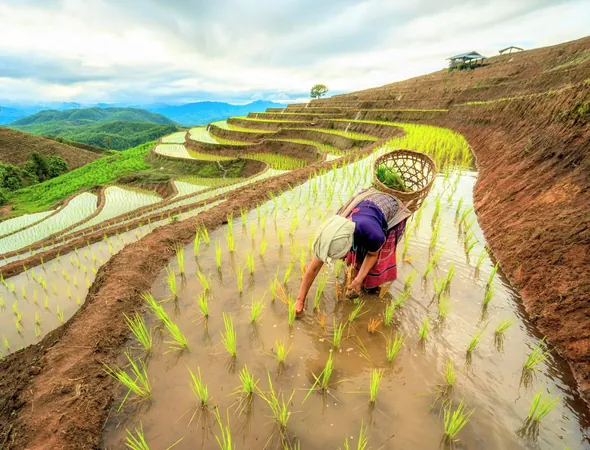
Revolutionizing Space Food: Tiny Rice Plants Could Sustain Astronauts in Deep Space
2025-07-10
Author: Arjun
The Quest for Fresh Food Beyond Earth
As humanity dreams of life off our planet, the need for fresh food in space becomes increasingly critical. Enter the Moon-Rice project, a groundbreaking initiative aimed at cultivating crops that could nourish astronauts and even those in extreme conditions on Earth.
Current Limitations of Space Diets
Right now, space missions rely heavily on pre-packaged meals from Earth, which often lack fresh ingredients and essential nutrients. This reliance poses serious challenges for long-term missions where a balanced diet is crucial.
Daring to Grow in Space
The goal of the Moon-Rice project is ambitious: to develop crops that are rich in vitamins and fiber, sustainably supporting life during deep space missions. Marta Del Bianco, a plant biologist at the Italian Space Agency, emphasizes the project's dual mission: "We are tackling the same sustainability issues that plague us on Earth."
The Tiny Rice Revolution
A key focus is finding the right size for crops. Current dwarf varieties of rice are still too bulky for limited space. Dr. Del Bianco points out, "We need a super-dwarf rice that not only fits spatial constraints but also yields a substantial harvest." Manipulating plant hormones like gibberellin can reduce height, but brings its own challenges in seed germination, complicating the search for the ideal space crop.
Collaborative Innovation
Joining forces with three prominent Italian universities, this research initiative is pooling expertise. The University of Milan focuses on rice genetics, the University of Rome 'Sapienza' on crop physiology, and the University of Naples 'Federico II' lends its rich experience in space agriculture.
Promising Developments in Miniature Rice
Researchers at the University of Milan have identified rice varieties that grow merely 10 centimeters in height. Del Bianco explains, "Isolating these mutant varieties is a breakthrough, and with advancements in genetic engineering, we are optimizing both size and productivity." This could lead to protein-rich crops suited for the unique environment of space.
Simulating Space Conditions on Earth
To prepare these crops for the realities of microgravity, the team employs innovative techniques to simulate space conditions right here on Earth. By spinning the plants continuously, they mimic the effects of microgravity, allowing scientists to assess their growth response.
Enhancing Astronaut Well-being
Fresh food isn't just about nutrition; it's also vital for mental health. Del Bianco highlights that growing plants provides a sense of purpose and reduces stress, critical for astronauts on long missions where psychological well-being directly impacts success.
Broader Agricultural Implications
Interestingly, the research from the Moon-Rice project holds promise for Earthbound agriculture, too. Del Bianco notes, "A resilient crop developed for space could thrive in extreme environments, like the Arctic, deserts, or cramped indoor spaces, benefiting farmers everywhere."
The Future of Space Agriculture
The findings from this pioneering research will be showcased at the Society for Experimental Biology Annual Conference in Antwerp, Belgium, on July 9, 2025. The future of food in space might just be a tiny rice plant away!

 Brasil (PT)
Brasil (PT)
 Canada (EN)
Canada (EN)
 Chile (ES)
Chile (ES)
 Česko (CS)
Česko (CS)
 대한민국 (KO)
대한민국 (KO)
 España (ES)
España (ES)
 France (FR)
France (FR)
 Hong Kong (EN)
Hong Kong (EN)
 Italia (IT)
Italia (IT)
 日本 (JA)
日本 (JA)
 Magyarország (HU)
Magyarország (HU)
 Norge (NO)
Norge (NO)
 Polska (PL)
Polska (PL)
 Schweiz (DE)
Schweiz (DE)
 Singapore (EN)
Singapore (EN)
 Sverige (SV)
Sverige (SV)
 Suomi (FI)
Suomi (FI)
 Türkiye (TR)
Türkiye (TR)
 الإمارات العربية المتحدة (AR)
الإمارات العربية المتحدة (AR)